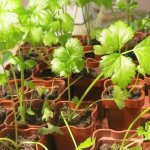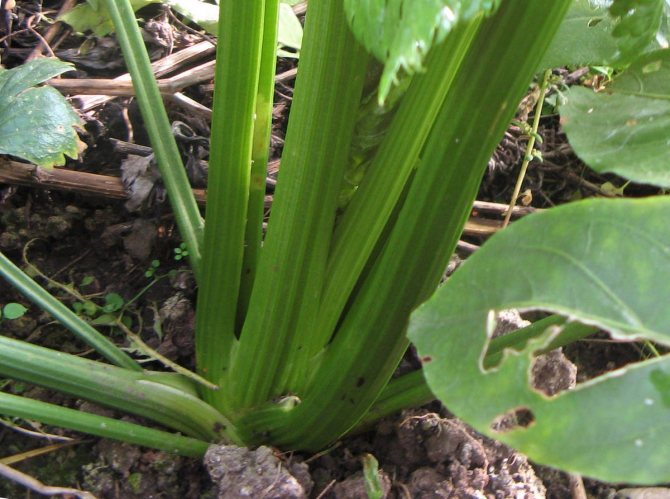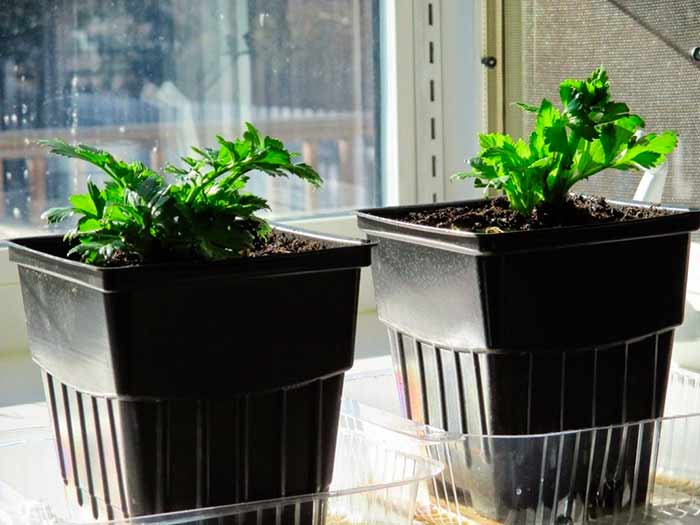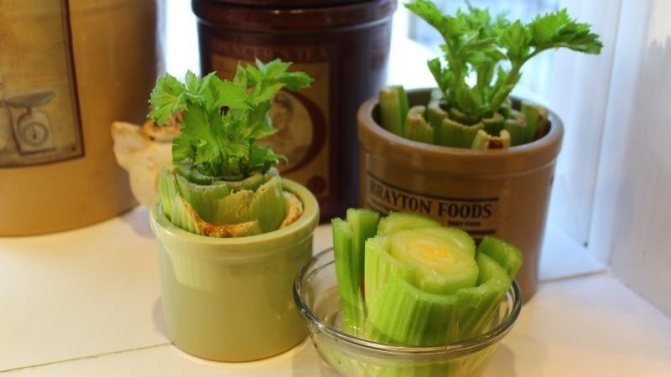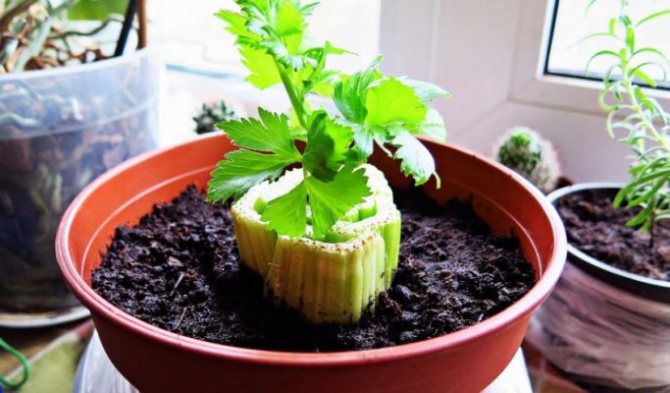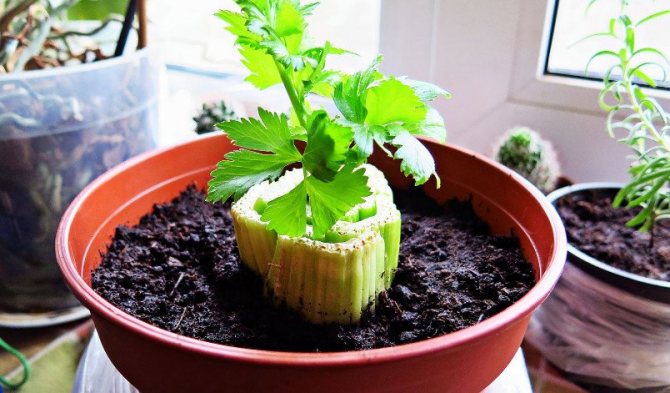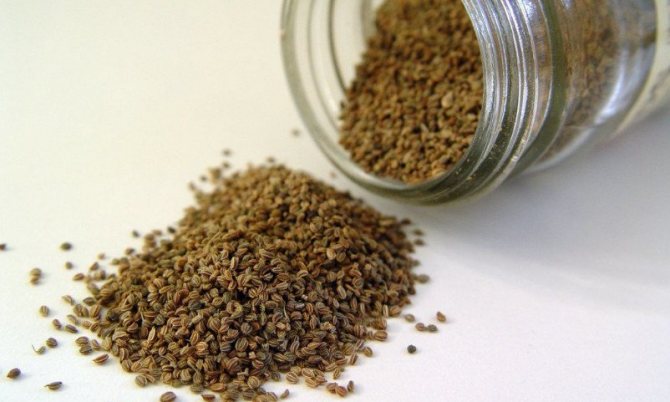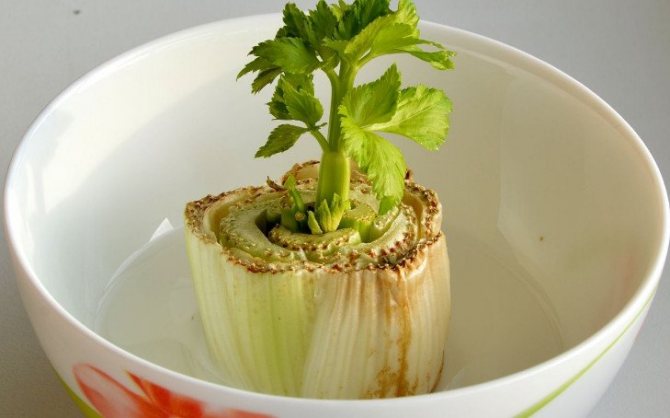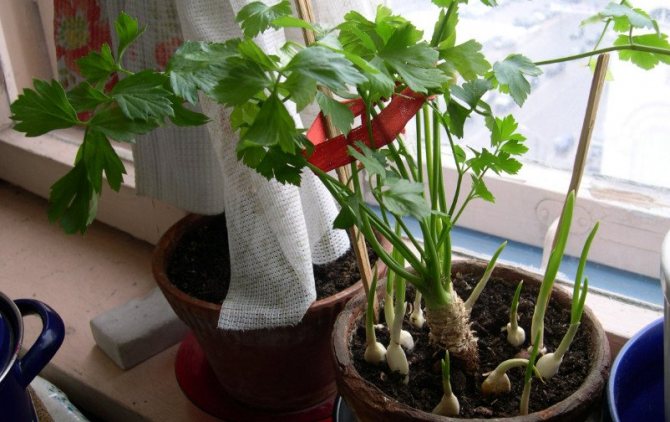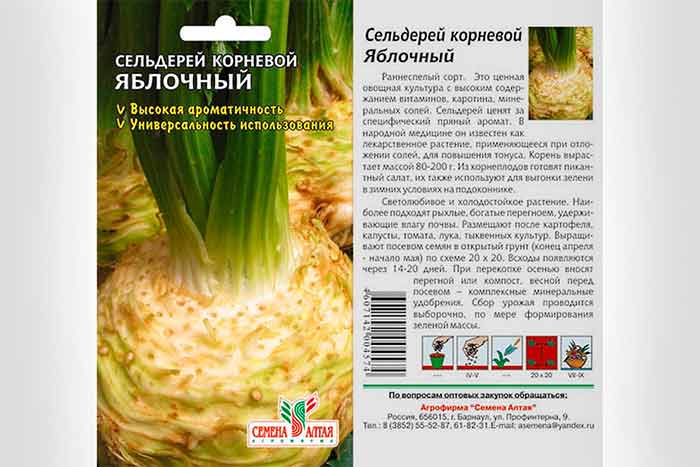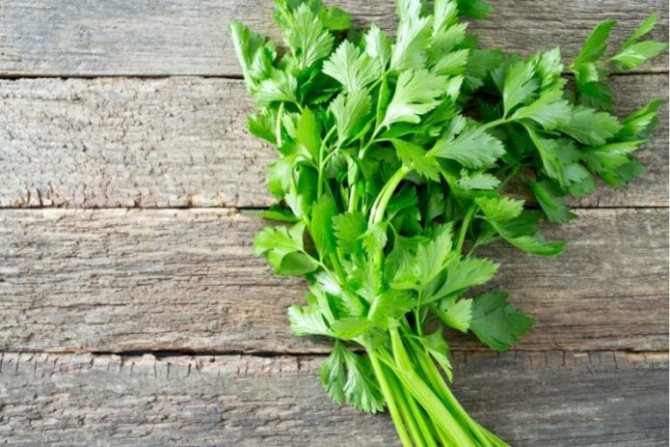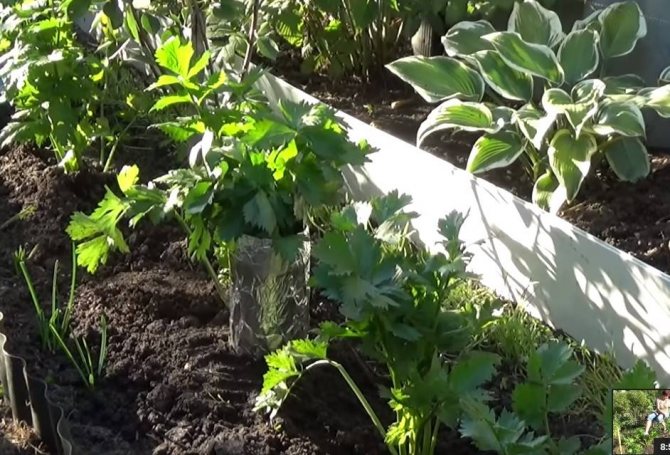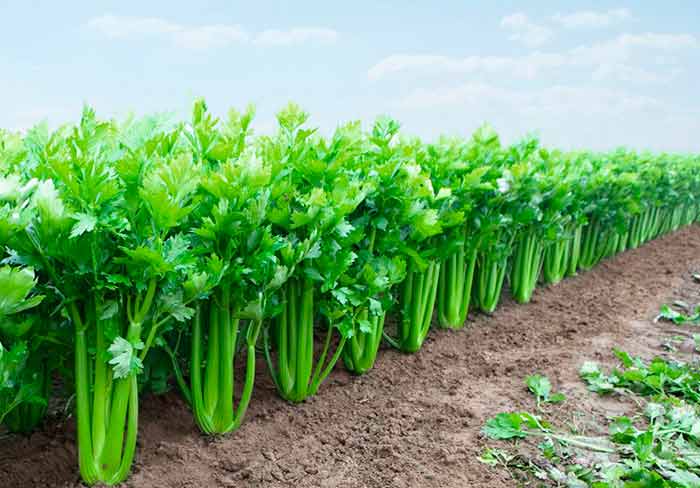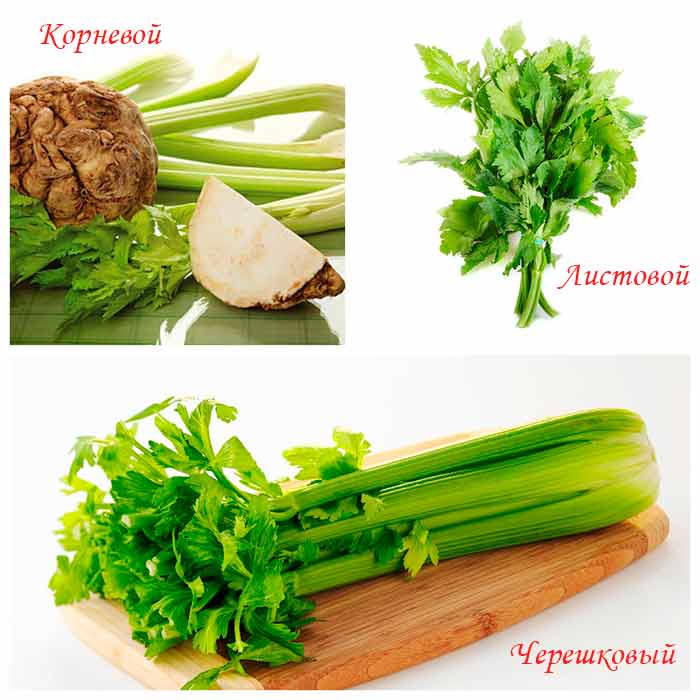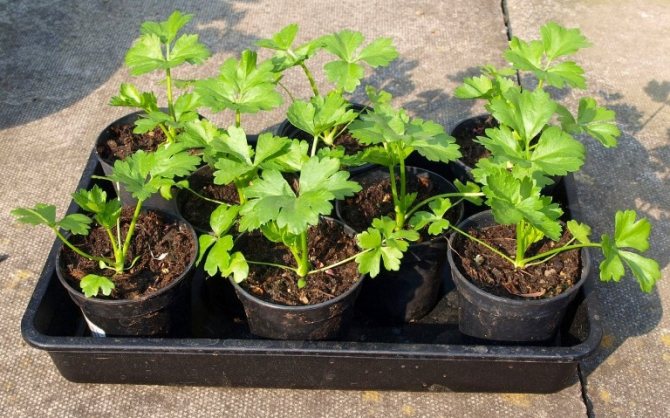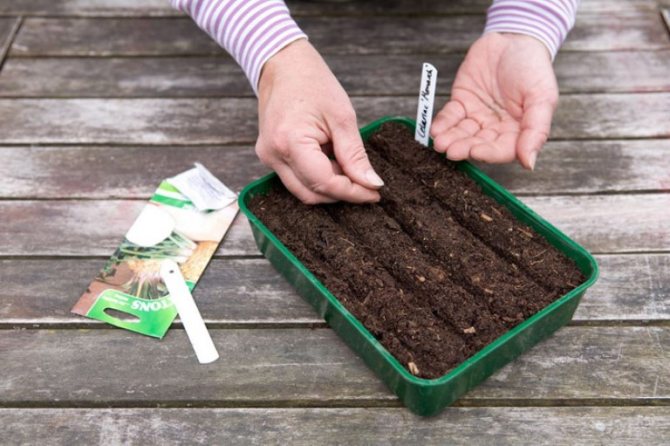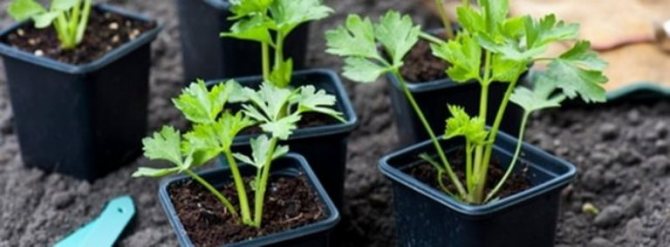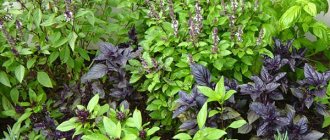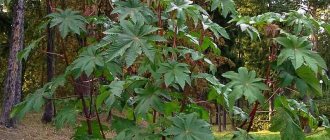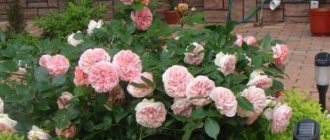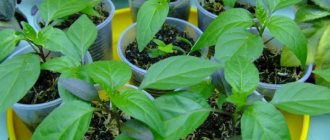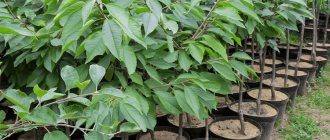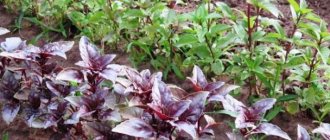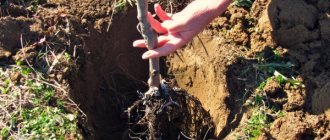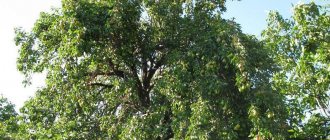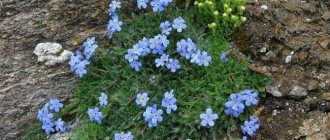In the garden and in the garden, you can always find greens: parsley, dill, lettuce. Plants are unpretentious to care for, do not require special costs when growing. But there is another green crop - celery. Its beneficial properties have been known since the times of Ancient Greece.
According to mythical stories, the plant contributed to the enhancement of the beauty and youth of Aphrodite herself. Cultivation of the culture begins long before the onset of warm days. Reason: Celery seedlings grow for a long time. The entire ripening period lasts up to 150-160 days.
The advantages of the seedling method
There are many advantages of using celery, but it is not said at all when it is better to plant in the ground, which method to choose. Experienced farmers claim that celery will delight the owner with its taste, a large amount of vitamins, if we take into account the species characteristics, the sowing time.
Since the plant loves a lot of heat and light, and the growing time is long (almost 3 months), the best option is to plant seedlings.
Despite the fact that resistance to temperature extremes (mild frosts) is one of the positive characteristics of a vegetable crop, it is better to protect the plant from such stress. Only the red-peted variety can withstand frosts on the ground up to -5 degrees.
The advantage of growing celery seedlings can be considered the possibility of obtaining a good harvest in a temperate climate. But in the northern regions, you can get the desired result only in a greenhouse.
The positive aspects also include:
- the ability to remove sick, poorly developing shoots;
- pre-treat with complex agents to enhance growth, improve immunity;
- protect from freezing;
- provide protection from pests that wake up hungry in the spring. Therefore, they eat everything that gets in the way.
Need to know! When choosing a place for permanent planting of celery, the farmer must remember: the most dangerous enemy for the culture is the celery fly. If you plant near the parsnip, the number of pests increases. Therefore, such a neighborhood is excluded immediately.
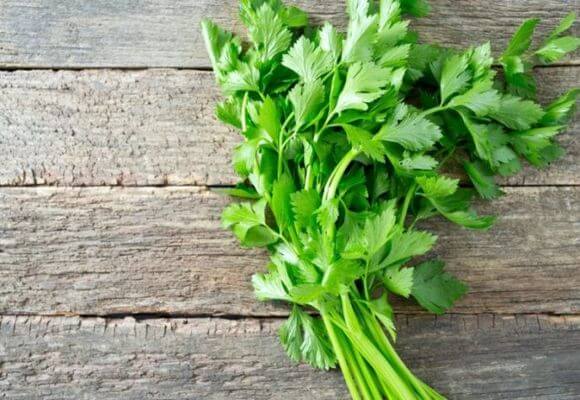
Soil preparation on site
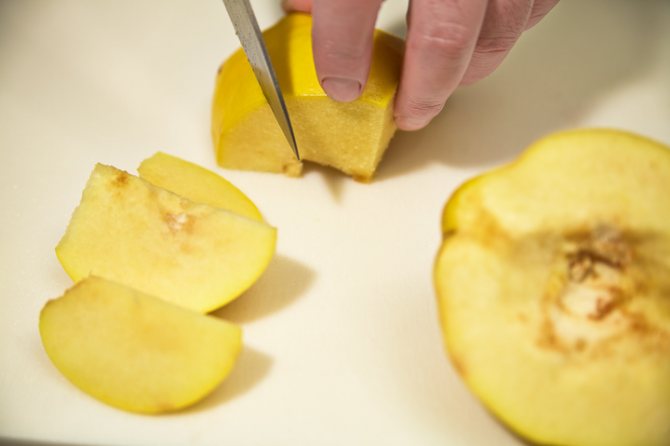

To get a rich harvest of celery, you need to prepare the soil for growing it. The vegetable culture does not take root well in acidic and poorly drained soils. For it, you need to pick up a deep, humus-rich loamy soil. The plant is recommended to be planted in areas that have been abundantly fertilized during the cultivation period of the previous crops - peppers, cucumbers, tomatoes. The place for celery should be open and well lit by the sun.
The most productive seeds of tomatoes of Siberian selection
Rotten manure or compost is applied to poor soils. Fertilizer has a positive effect on root formation. Mixtures containing phosphorus will accelerate ripening and increase the quality of the crop. Potash fertilizers contribute to the accumulation of sugar and starch in the plant, as well as to increase its frost resistance. The missing calcium and magnesium celery will make up from the ground if liming is carried out before winter. For 1 m 2, 7-8 kg of rotten manure (or compost), 4-5 g of nitrogenous, 10 g of phosphorus and 5 g of potassium fertilizers are applied.
When to plant celery seedlings
Before calculating the sowing time for celery seedlings, it is necessary to clarify the plant variety.There are three varieties of culture:
- petiolate;
- sheet;
- root.
The name indicates the part of the plant that is suitable for consumption. The ripening time for each species is different and ranges from 85 to 200 days from the date of sowing.
Plus, the quality of the soil of the land plot, climatic features add to this figure. It is important to consider the recommendations for the lunar calendar.
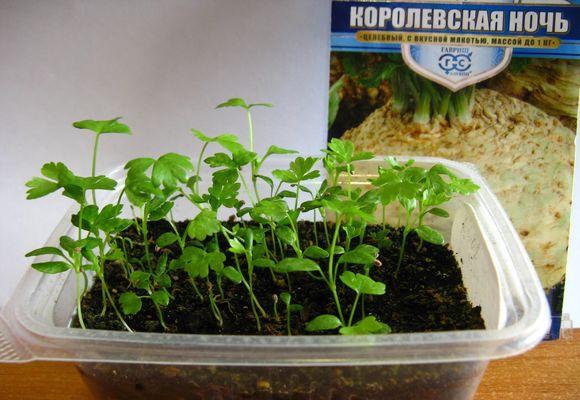

Lunar calendar
The standard planting of celery for viable seedlings is March, and for some varieties, February. But it is better to coordinate the date correction according to the night star. Annually favorable days change, which makes it impossible to carry out work at the same time.
Accurate information on sowing celery and other crops is viewed according to the lunar calendar. You can buy such a tip at a newsstand, agromaterial store.
According to the recommendations of the manufacturers, depending on the variety
It is difficult for novice gardeners to correctly calculate the timing. A lot of advice from summer residents in the neighborhood adds more confusion. If you carefully study the packaging with seed material, you can see the recommendations of the manufacturers. This is your best fit advice.
Landing dates
When to sow celery seedlings? Sowing seeds begins 60-80 days before the transfer of seedlings to a permanent place... Optimum dates are chosen according to the lunar calendar.
Sowing dates for root celery in 2020:
- in January: 1, 5-9, 11, 27-29;
- in February: 10-15,17-20, 24 and 25;
- in March: 3-6, 17, 18, 22, 27-30;
- in April: 5-7, 10-14, 18, 19, 23, 25-29;
- in May: 2-6, 15-17, 24-26, 30 and 31;
- in June: 1-4, 6-8, 12, 13, 22, 23, 26-30;
- in July: 1-5, 9, 10, 14, 15, 23-31;
- in August: 1, 2, 5-7, 10-16, 21-26, 28 and 29;
- in September: 3, 6-13, 18-25, 30-31;
- in October: 4-10, 13, 14, 17-23, 26, 27 and 31;
- in November: 1-6, 10-13, 16-19, 22-24, 27-30;
- in December: 2-4, 15-21, 25-31.
Sowing dates for petiole and leaf celery in 2020:
- in January: 1, 5-9, 11, 27-29;
- in February: 10-15, 17-20, 24 and 25;
- in March: 3-6, 17, 18, 22, 27-30;
- in April: 5-7, 10-14, 18, 19, 23, 25-29;
- in May: 2-6, 15-17, 24-26, 30 and 31;
- in June: 1-4, 6-8, 12, 13, 22, 23,26-30;
- in July: 1-5, 9, 10, 14, 15, 23-31;
- in August: 1, 2, 5-7, 10-16, 21-26, 28 and 29;
- in September: 3, 6-13, 18-25, 30-31;
- in October: 4-10, 13, 14, 17-23, 26, 27 and 31;
- in November: 1-6, 10-13, 16-19, 22-24, 27-30;
- in December: 2-4, 15-21, 25-31.
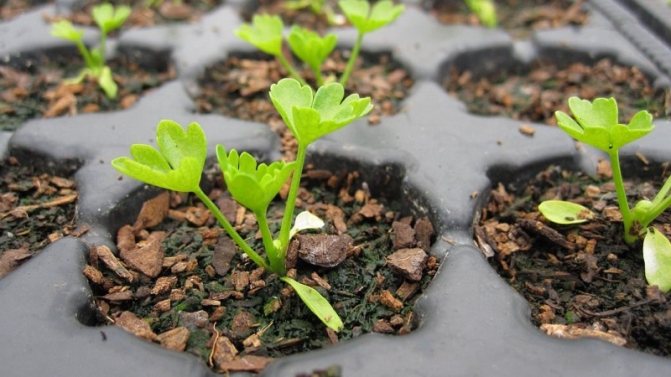

Moon phases affect plant growth: greens are actively developing on a growing moon, roots - on a waning one.
Given the variety of climatic zones of our country, in the matter of sowing celery for seedlings, it is better to focus on the weather conditions in the regions.
Interesting on the topic:
Growing leaf celery outdoors
Stalked Celery Growing Guide
Why grow apple celery
Root celery has a long ripening period, therefore, sowing seeds is carried out 60–80 days before transplanting. In the north of the country, sowing work begins at the end of January and ends in mid-February.
In the regions of the middle lane, sowing is carried out throughout February. In the south, the optimal period for sowing is the second decade of February - the first decade of March.
Sowing dates for stalked celery:
- in the south - the last decade of March - the first decade of April;
- in the regions of the middle lane - all March;
- in the north - sowing work is completed by March 10.
Sowing leaf celery for seedlings in the northern regions rationally produce in the second decade of March. Residents of the middle zone do not need to be afraid of frost at the beginning of summer, so sowing of seeds begins in early April.
Seed sowing technology
Before sowing celery seeds, the farmer must prepare. The work is carried out with sowing material, a container and soil are being prepared. In order for the seedlings to be strong, with a well-developed immune system, clearly follow the recommendations of agricultural technology.
Selection of soil and capacity
The substrate for celery is selected fertile, loose. On sale there is a soil mixture specifically for growing seedlings. You can make a substrate that works for celery yourself.
The ingredients are pre-etched with a weak manganese solution and fried in the oven. For the soil mixture you will need:
- peat (3 parts);
- sod land (part 1);
- coarse sand (1 part).
For better air exchange, wood ash (200 g or 1 glass) is added to 10 liters of substrate.
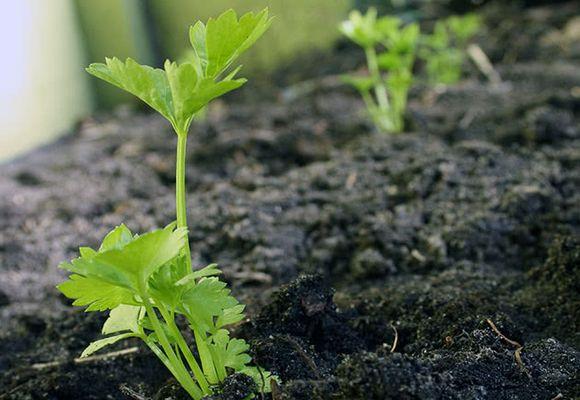

It is better to use special containers for seedlings: peat pots and tablets, cassettes, plastic containers. Experienced gardeners often use improvised materials: disposable dishes, thick bags from dairy products.
Seed preparation
Mandatory processing is required. This is due to the presence of a large amount of oils in the seedbed. Soaking helps to reduce concentration, go through the process of swelling, pecking faster.
The solution for improving the quality of seeds and for neutralization is different. This is how bubbling is initially carried out: soaking in water saturated with oxygen. Withstand at least 24 hours. Then it is sent to a manganese solution for pickling. Here celery is left for 45-60 minutes.
Cultivation rules in different regions
The article presents the main conditions for growing and caring for root celery in the central regions, including the Moscow region. The cultivation of root celery in the Leningrad region will differ only in the choice of early-maturing varieties and later dates for planting seedlings in open ground.
For Siberia and the Urals, varieties are chosen with ripening periods of no more than five months, which have cold-resistant and drought-resistant properties. It is worth noting that the seedlings are afraid of cold weather, and the formed roots, covered with a powerful leaf rosette, tolerate the first frosts well.
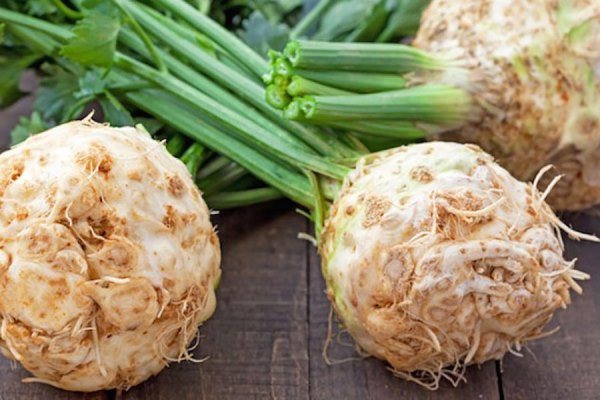

Seedling care
After the appearance of green sprouts, the celery is moved to a lighted place, where it should be warm, there should be no draft. The covering material is not removed until three full-fledged leaves appear.
Procedures will be required to strengthen celery seedlings: timely watering, maintaining temperature, good lighting, picking and hardening.
Lighting, temperature, humidity
Celery seed is planted early (February - March), so a young plant needs lighting for up to 12-14 hours a day. The first week - round-the-clock illumination.
The temperature regime is maintained within 25-26 degrees. At the same time, young celery is watered, taking into account the maintenance of moisture.
Watering and feeding
The earth should not dry out. Direct watering is excluded. Use a spray bottle or drip method. Waterlogging, stagnant water contributes to the appearance of blackleg and other fungal diseases.
Feeding celery before planting in an open area is not recommended. The first feeding is possible after the pick (not earlier than 14-21 days).
Diseases and pests
Even at home, there is a possibility of damage to celery. This happens for the following reasons:
- Neglecting disinfection. You need to disinfect soil, drainage, pots, planting material and loosening tools. Infections persist on them.
- Dangerous neighborhood. Diseases and pests often get on celery from nearby indoor plants.
- Drafts or lack of ventilation. This weakens the plant's immunity and increases the likelihood of infection.
- Violation of watering rules. Both dry and waterlogged soil serve as an ideal environment for the development of infections.
- Poor soil. Lack of top dressing leads to depletion of the soil in the pot and a decrease in plant immunity.
Celery is usually attacked by fungal diseases at home. These include:
- powdery mildew;
- white rot;
- septoria;
- cercosporosis.
Disease prevention is defined as avoiding the factors that cause them. If the plants are sick, it makes no sense to fight infections. Treatment chemicals seep into the greens, making them hazardous to health.
There are not many pests in the apartment that can infect celery.Usually the plant is attacked by spider mites or thrips. In the fight against pests, a soap solution (1 piece of laundry soap per bucket of water) or a decoction of bitter herbs (wormwood, dandelion, yarrow) will help. The preparations are used for spraying plants.
Not always a bad look of plants indicates a disease. If the celery looks lethargic, its leaves are yellow and stained, the reasons are sought in the following factors:
- Violation of watering rules. The problem arises when there is a lack and excess of fluid. If the soil of a plant with signs of wilting is wet, watering will have to be stopped until it is completely dry.
- Drafts. To save a plant that is dying due to drafts, it is moved to a warm place and fed.
- Lack of nutrients. In the absence of top dressing, the soil becomes poorer after a month.
When to plant seedlings in open ground
The soil for celery is prepared before the winter cold: fertilized, loosened, the remains of plant debris are selected. In the spring, 2-3 weeks before planting celery seedlings, repeat the activities.
The transplant is planned 80 days after sowing the seed. Before starting work, you should make sure that:
- frost is not expected;
- the soil is ready (fertilized). The acidity of the soil does not exceed 5-7 pH;
- the sun's rays will illuminate the seedlings for more than 8 hours;
- no drafts, high humidity.
You can transplant celery seedlings early in the morning or in the evening. There should be no cabbage, onions, cucumbers, dill, parsley or carrots near the plant.
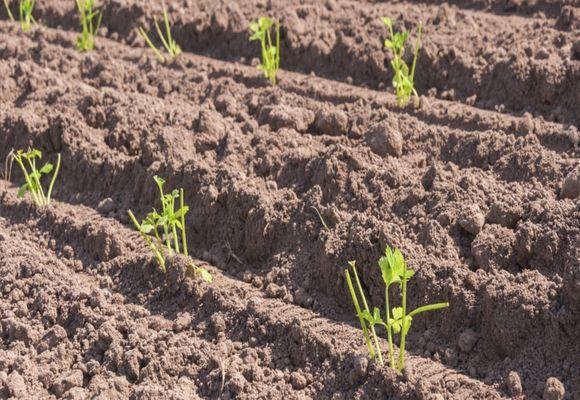

Harvesting and storage
The harvesting method depends on the cultivation method... There are three options in the list:
- When grown from a root crop, the crop is harvested 3 weeks after planting. Cut off all the greens.
- When grown from a stalk, the first crop is harvested 4 weeks after planting. Young shoots are left, new greens will appear from them.
- Seeds. In this case, the first crop is harvested 2 months after planting. At the same time, part of the greenery is cut off from each plant. This will allow new branches to develop.
It is best to collect greens as needed. If the cut celery remains unused, it is not stored in the refrigerator, but in a glass of water at room temperature.
The nuances of growing celery in the beds
Just replanting the plant, watering and loosening is not enough for the normal development of the culture. It is required to remember about the introduction of fertilizer mixtures, providing protection against pests, fungal diseases.
Irrigation
Celery is a plant that loves moisture and a lot of sunlight and warmth. Balance can only be achieved by irrigation. Direct watering is not recommended, as this contributes to decay of the root system.
Fertilizer
During the growing season, it is enough to carry out 2 nitrogen fertilizing: after picking and transplanting. Additionally, it is treated once every three weeks with Agrolife or once a week with Growth. Dilute the solution strictly according to the instructions.
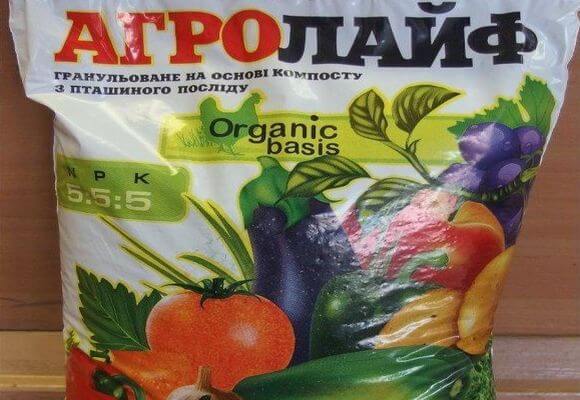

Protection against diseases and insects
Celery is susceptible to diseases such as rust, white spot, cercosporosis, and fungal infections. Diseases can be prevented using chemicals or traditional methods of struggle.
It is recommended to reduce the damage to the plant by pests:
- constant harvesting of weeds;
- plant green manure plants;
- carry out processing with mustard, tobacco dust.
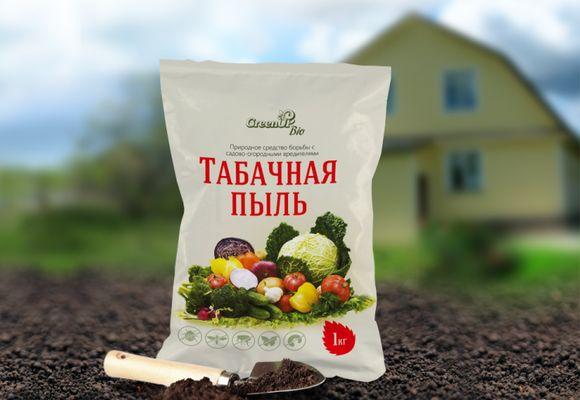

Celery varieties and common varieties
Celery is classified based on what part of the plant is eaten. But this does not affect the benefits in any way. Accordingly, the gardener chooses a specific variety, focusing on his own preferences. Any celery is high in potassium, calcium and magnesium, essential oils, essential amino acids, vitamins B and C. It helps to normalize blood pressure and water-salt metabolism, cleanse the body of toxins and toxins. If you eat it regularly, the tone of the skin, the condition of nails and hair improves, the susceptibility to factors causing stress decreases, and causeless anxiety and anxiety disappear. It is also an effective prevention of bone and joint problems. But, despite all the possible benefits, celery is not recommended for use in kidney disease, especially in the presence of urolithiasis. Potassium provokes fluid retention in the body and can disturb stones, which most often results in hospitalization. Another contraindication is the threat of miscarriage during pregnancy.
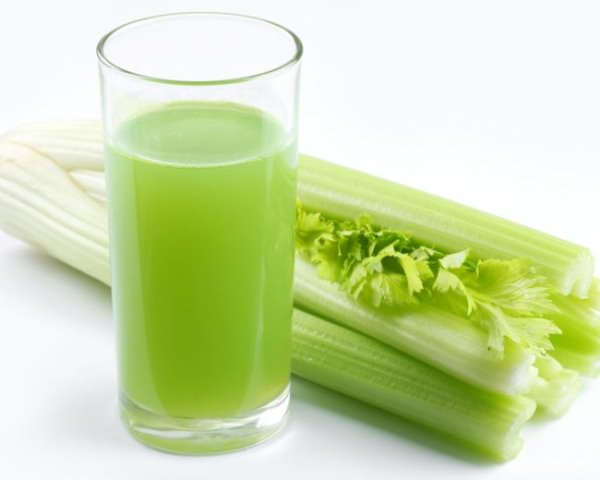

The health benefits of celery are scientifically proven
Leafy celery
The presence of not particularly powerful stem roots, short petioles and a lush "cap" of leaves is characteristic. The latter outwardly extremely resemble parsley, but slightly larger in size.
The most popular varieties:
- Local. The length of the leaf with a petiole is about 50 cm, the latter are hollow inside. From 1 m², subject to the planting scheme, up to 3 kg of foliage are cut during the growing season. An increased content of anthocyanins and vitamin C is characteristic.
- Samurai. Refers to varieties of medium ripening. The edges of the leaf plates are "curly". The petioles are hollow. Greenery can be harvested 3.5–4 kg / m².
- Tender. Mid-season variety. The leaves are glossy, very fragrant (even when dry). The bush grows actively in width.
- Zakhar. The growing season is 3–3.5 months. The bush is low (up to 35 cm), as if "raised". Leaves are smooth, medium-sized, new ones grow quickly after cutting. Productivity - about 3.5 kg / m².
- Cheerfulness. Variety of medium early ripening (65–70 days). The bush is very powerful, the leaves are erect, glossy. The leaf plate is deeply dissected. It tolerates drought and cool weather well. Leaves can be cut 2-3 times per season.
- Impruved Green. The rosette is spreading, takes up a lot of space, and consists of 80–110 leaves. The petioles are elongated, hollow.
- Cartouli. Greens have a distinct aroma. The leaves are erect, the rosette is spreading. Cutting is carried out 3-4 times during the growing season. The petioles are hollow, dark green in color.
- Sail. One of the most undemanding varieties to care for. Differs in high productivity. The rosette of leaves is powerful, half-raised. You can cut them 90 days after germination.
Photo gallery: the best varieties of leaf celery
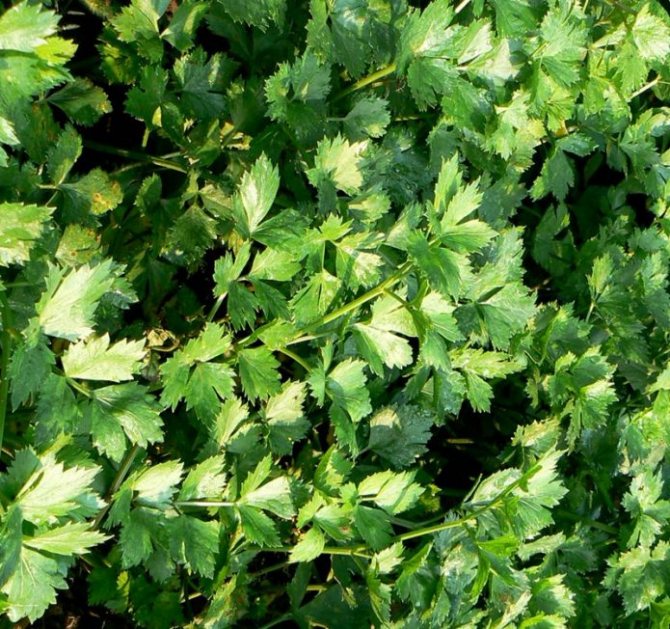

The health benefits of local celery are due to its high vitamin C content.
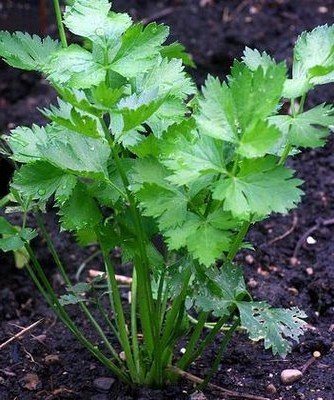

The Samurai celery variety is easy to distinguish by the corrugated edges of the leaves. Celery Zakhar is valued for its yield and overall unpretentiousness.
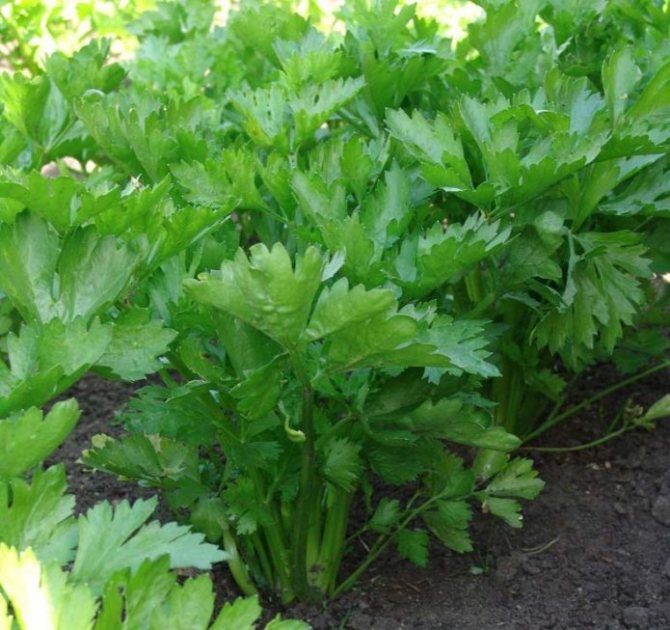

Celery of the Tender variety has very fragrant greens, the smell persists even after drying
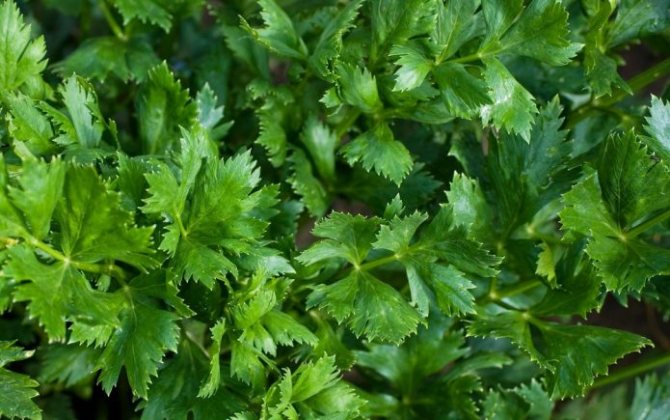

Celery Imruved Green has a powerful outlet, when planting, it is imperative to observe the recommended distance between seedlings
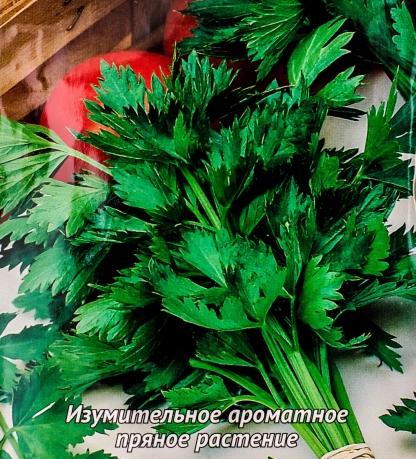

Vigor is a medium early celery variety that tolerates adverse weather conditions well
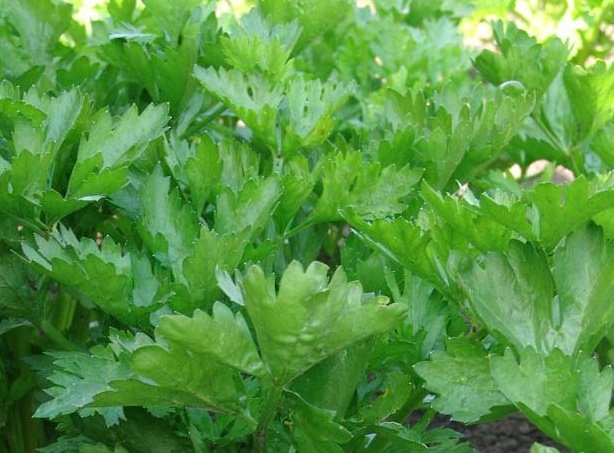

Kartuli celery leaves are cut several times during the growing season
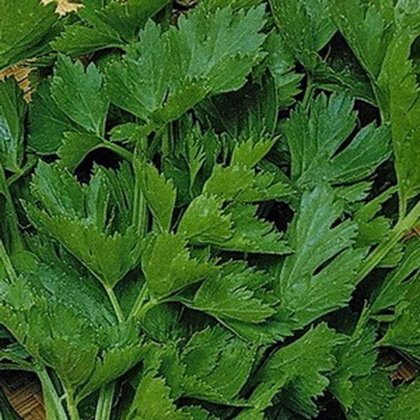

Sail is an early and very undemanding celery variety
Root celery
Root vegetables can be eaten fresh. The pulp has a sweetish taste, it smells almost like parsley. The pulp is juicy, snow-white. The skin is thin enough, so when harvesting, you need to handle the tubers carefully so as not to damage it. Most often, in shape, the tuber resembles a cross between an apple and a pear or a bulb, but there are also varieties with elongated roots. Full ripening of tubers in most cases takes six months or more, therefore, it is not possible to grow such celery in Russia in all regions.
The most common varieties:
- Invictus. Differs in early maturity, ripens in 4.5 months. Tubers about 500 g or slightly larger, the skin is grayish white. The average diameter is 6–8 cm. It tolerates drought well.
- Prague Giant. One of the most popular varieties both in Russia and all over the world. Ultra-fast ripening, ripens in 120-130 days. Root weight - 0.7-0.8 kg. The shape resembles a turnip. A pronounced aroma is characteristic. There are few leaves (20–25 pieces), they form a small bunch.
- Delicacy. Spreading rosette of leaves, leaf plates are dark green. The tubers are slightly flattened, weighing about 500 g. The presence of numerous adventitious roots is characteristic.
- Apple. It rarely suffers from pathogenic fungi and harmful insects, it is well stored. The bush is low (40-50 cm), semi-spreading. Tubers are round, slightly flattened, small (up to 0.4 kg). The skin is whitish, "porous". It belongs to the early varieties, roots ripen in 100-160 days (it depends on the weather). The pulp is sugary. The leaves have an intense aroma.
- Root Gribovsky. The length of the leaf with a dark bottle-colored petiole is about 50 cm. Root crops are medium-sized, weighing 75–140 g. The shape varies from almost spherical to strongly elongated. Ripen in 4–5 months. The pulp is creamy or yellowish.
- Diamond. Very large tubers weighing 1.2–1.5 kg. The pulp is snow-white, practically without voids. Its color does not change even during long-term storage, cutting the tuber, heat treatment. The skin is smooth, even, the lateral roots are practically absent. Can be stored until early next summer.
- Cascade. Almost round root vegetables ripen for 5 months. The average weight is about 500 g. The accessory roots are located only at the very base of the tuber. Plants do not form an arrow.
- Albin. The tubers are almost round, the harvest is harvested 115-135 days after planting the seedlings. Diameter - 10–12 cm, weight - 300–450 g. The pulp is juicy, dense, the skin is pale salad. The root crop is completely hidden in the ground.
- Strongman. The average tuber weight is 0.35–0.45 kg. Their ripening time is 5-6 months. The pulp is creamy or light beige, the aroma is very rich. It is characterized by a very high content of mineral salts. The rosette appears to be slightly raised. The adventitious roots are concentrated at the very base of the tuber.
- Anita. The variety is loved by gardeners for its good immunity, consistently high yields and the absence of arrows. Tubers ripen in 95-100 days. Leaves are few, on long petioles. The tubers weigh 500 g or slightly less, the shape is almost a regular ball or ellipse. The pulp is snow-white, does not darken during heat treatment, retains its characteristic aroma.
- Egor. The variety is late ripening, tubers need 180-200 days to fully develop. Root crops are medium in size, weight varies from 200 g to 500 g. They are submerged in the ground about half. The shape is correct, round. The skin is gray-yellow, even. The pulp tastes distinctly sweet. Productivity - 3–3.5 kg / m².
- Giant. Powerful rosette, erect leaves. The average weight of the root crop is 0.65–0.9 kg. The skin is creamy. The variety is characterized by abundant yields (up to 5 kg / m²) and a wonderful taste of root vegetables.
- Maxim. The ripening period of the crop stretches for more than six months. The adventitious roots are practically absent. Tuber weight is about 0.5 kg. The pulp is snow-white or creamy. The skin is smooth and firm. Thanks to this, the tubers can be kept fresh for a long time.
- Ivan Tsarevich. Medium late variety (145-165 days). The tuber is rounded, the skin is beige-gray. The average weight is 0.25–0.35 kg, but there are also “champions” weighing up to 0.8 kg. Root crops are well stored and tolerate transportation without prejudice to themselves.
- Esaul. Tubers ripen in 145-165 days. The roots are elongated, the skin is grayish, even. Weight - 250-350 g, some specimens up to 1 kg. Accessory roots at the very base of the tuber.
- Alabaster. The crop ripens in 140-165 days. Differs in good keeping quality. The weight of an almost round root crop is 0.25–0.55 kg. It tolerates frosts up to 4–5 ° C without damage to itself. Extremely drought sensitive.
Photo gallery: root celery varieties
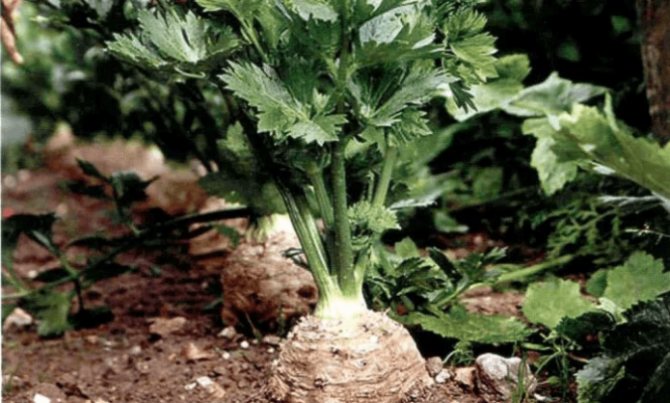

Celery Invictus has good drought tolerance
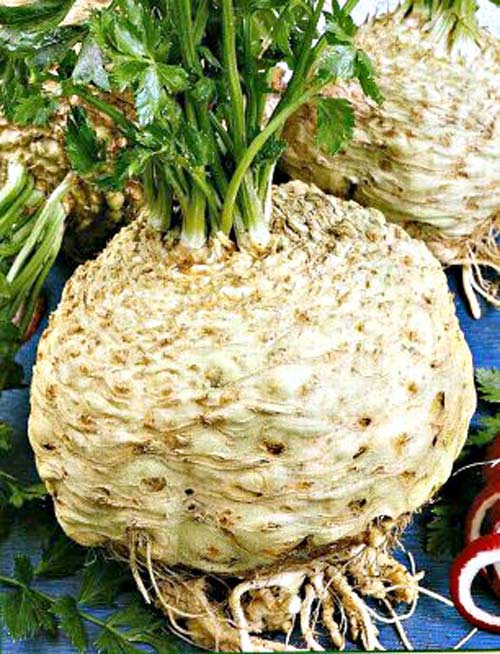

Prague Giant is one of the world's most popular celery varieties
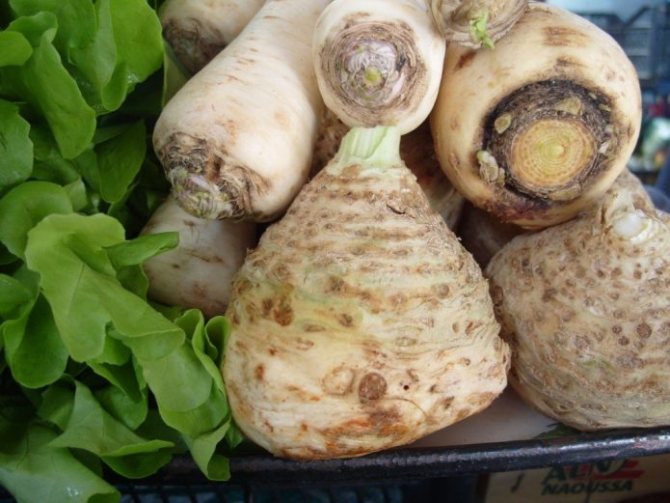

Root crops in celery Delicacy of irregular shape, but this does not affect the benefits and taste.
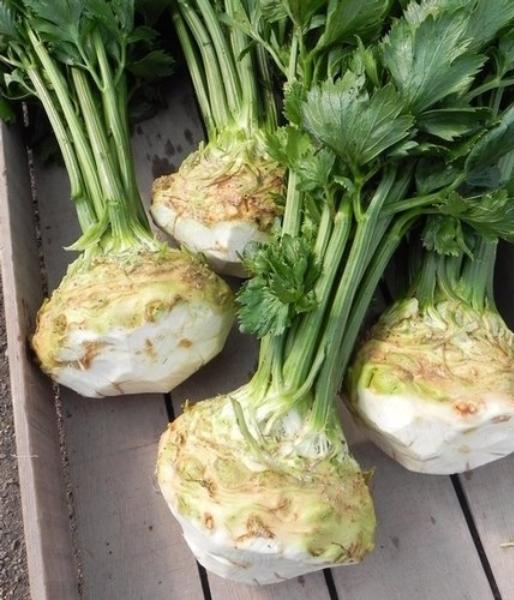

Apple celery rarely suffers from diseases and pests.
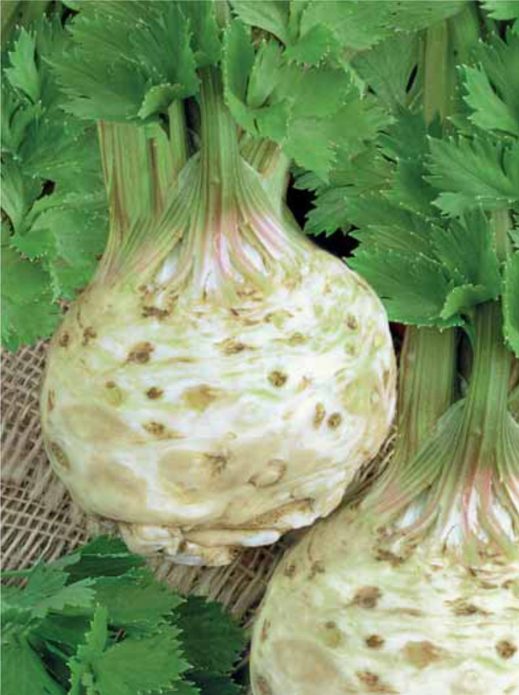

Celery Root Gribovsky - an achievement of Russian breeders
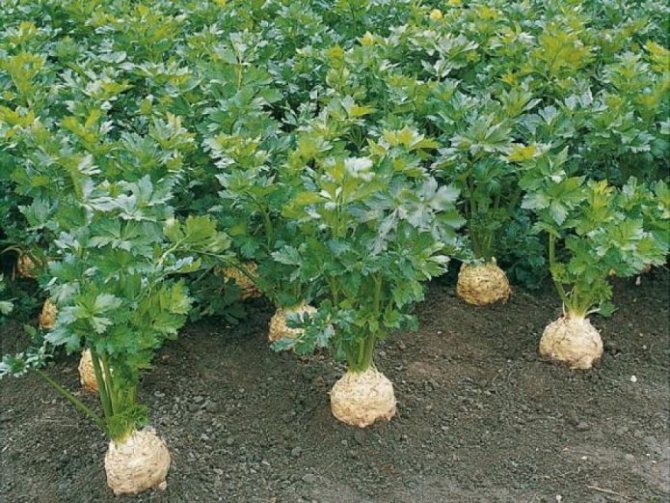

Celery Diamant fully justifies the name due to its many undoubted advantages.
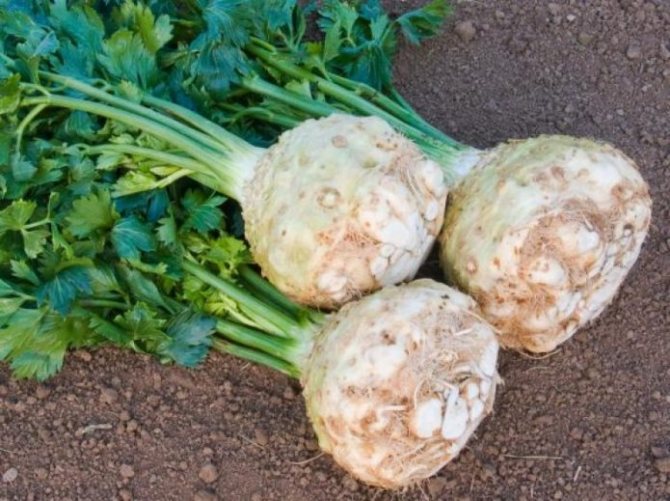

Celery Cascade, in principle, does not form an arrow. The albin celery tuber is completely hidden in the soil, if any part of it appears on the surface, the skin quickly turns green
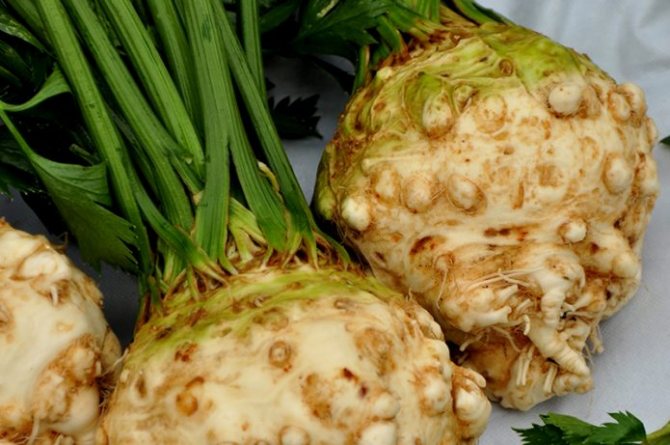

The high content of mineral salts makes the Strong celery very beneficial for health.
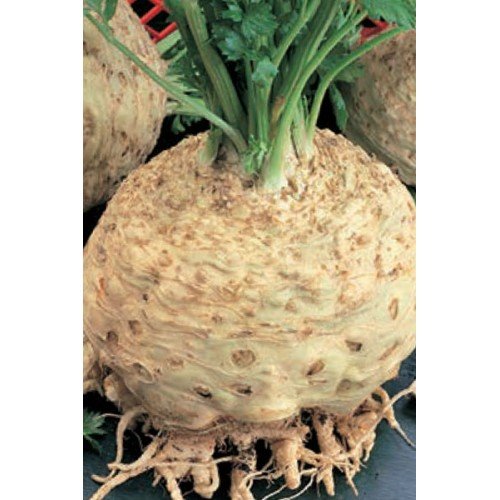

Anita is one of the earliest ripening celery varieties
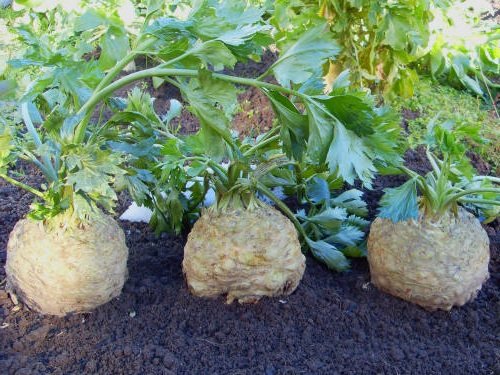

Gardeners appreciate Yegor celery for its undemanding care and taste, but the long growing season does not allow it to be grown throughout Russia.
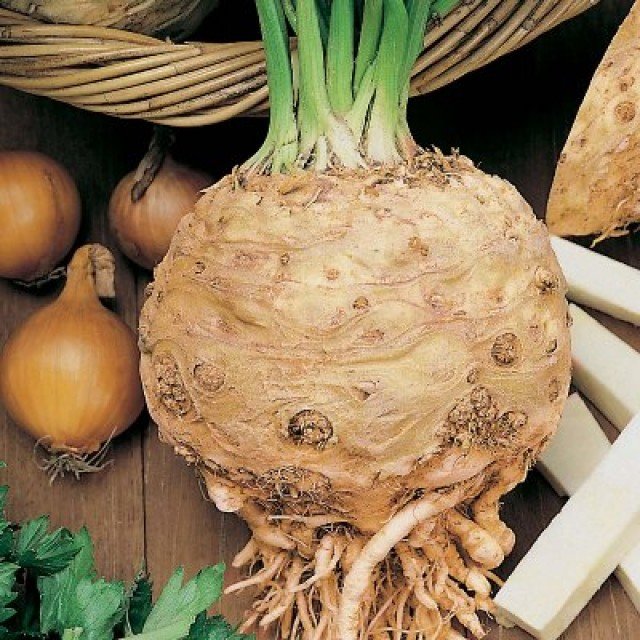

Celery Giant - a high-yielding variety
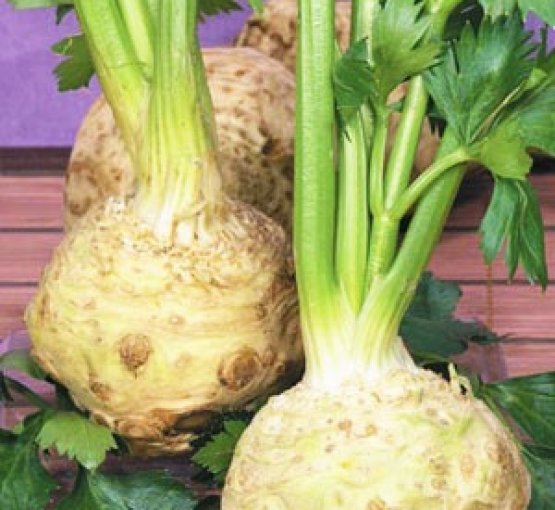

Celery Maxim has almost no lateral roots
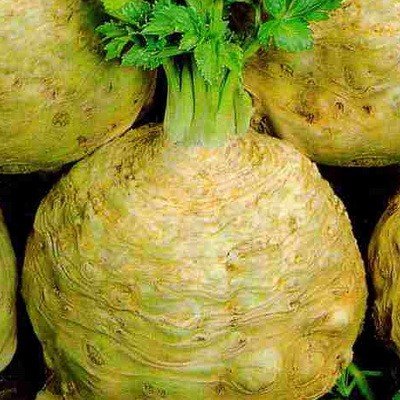

Celery Ivan Tsarevich can be stored for a very long time
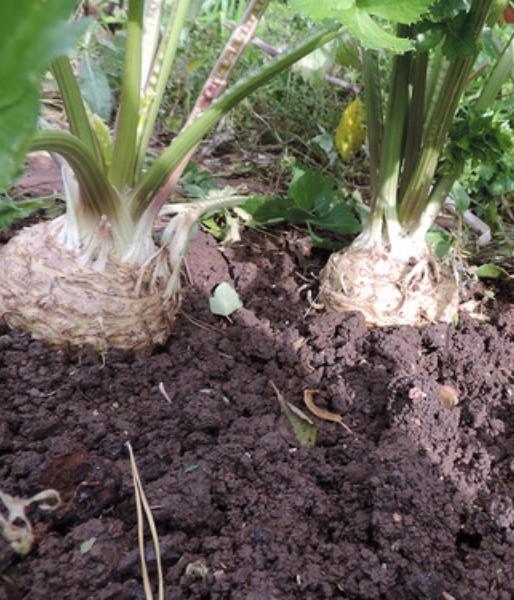

Esaul is a popular medium-ripening celery variety
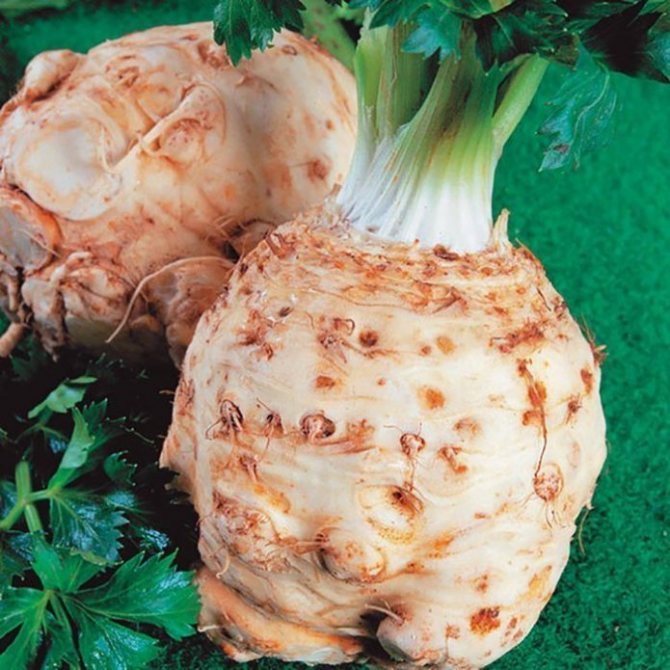

Celery Alabaster is frost-hardy, but does not tolerate drought
Petiolate celery
Does not form a tuber, it is characterized by the presence of a developed system of fibrous roots. Thick juicy petioles are eaten raw.
Most often, there are varieties in garden plots:
- Gold feather. Plants are vigorous, erect, up to 60 cm high. Petioles are lime-colored, slightly corrugated. As they mature, their color changes to golden yellow (these varieties are called self-bleaching). Up to 2 kg of yield is obtained from one bush.
- Pascal the Giant. It is planted both in the beds and in greenhouses, hotbeds. The growing season is 12-14 weeks. Salad-colored petioles, slightly curved, juicy, without bitterness, with a characteristic aroma. There are 16–20 of them on each bush. The plant is not tall - 25–35 cm. The weight of the rosette is 0.4–0.5 kg. Whitening occurs only if you provide protection from direct sunlight. The variety has good cold resistance.
- Malachite. The petioles can be cut 4 months after germination. They are very dense, fleshy, slightly curved, with a dark green skin. The average weight of the rosette is 1–1.2 kg, the length of the petiole is 30–35 cm.
- Utah. The rosette is powerful, spreading, up to 0.75 m high. Each has 16–20 leaves. Petioles are white-green, up to 2 cm thick. The yield from a bush is up to 4 kg.
- Tango. The variety has an average ripening period (160-180 days). Stems are even, smooth, long, cast bluish or bluish. The leaves are medium-sized, pale green. The pulp has a distinct aroma. It does not lose its freshness and presentable appearance for a long time, high yield is characteristic (the rosette weighs about 1 kg). It is extremely rarely affected by rust.
- Atlant. Ready for use 150-175 days after germination. The length of the petiole is 40–45 cm, the weight of the rosette is up to one and a half kilograms. Requires the creation of optimal or close to them growing conditions.
Photo gallery: varieties of stalked celery
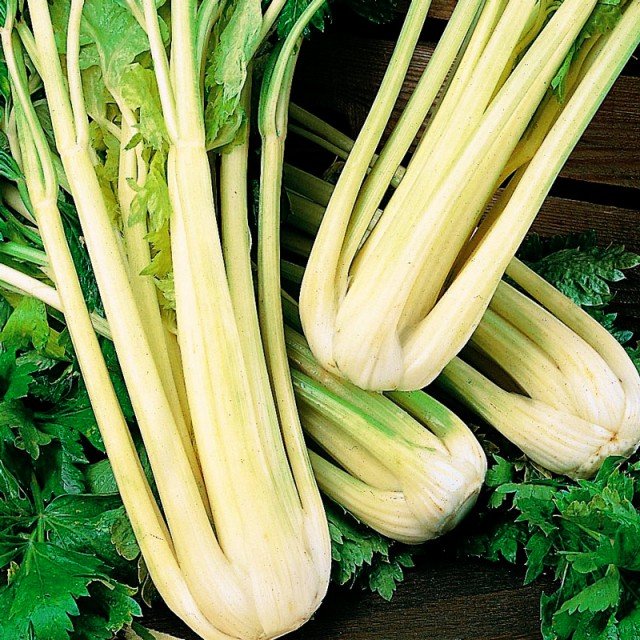

Celery Golden Feather belongs to the category of self-bleaching varieties
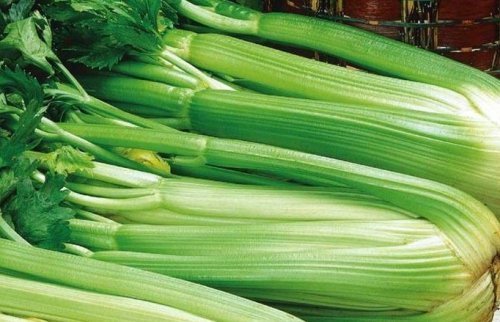

Celery Pascal Gigant is valued for its good frost resistance. Celery Malachite is a medium-ripening variety
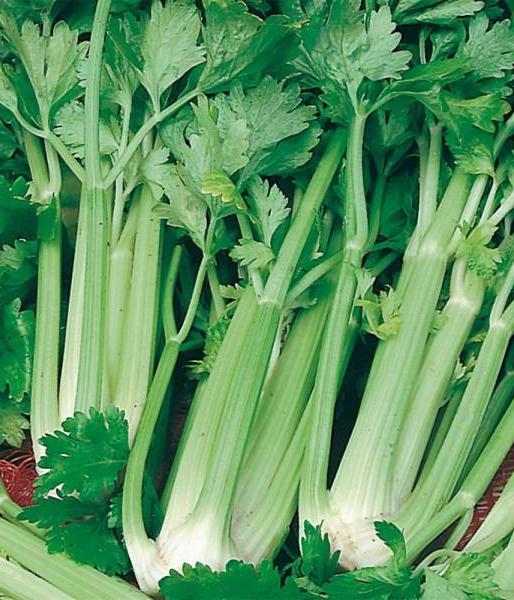

Utah celery has a high yield
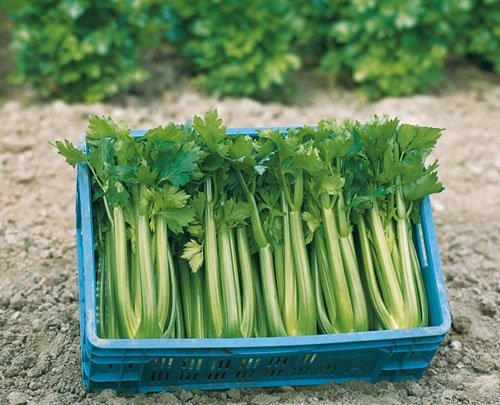

The Tango variety is suitable for those who grow celery on an industrial scale
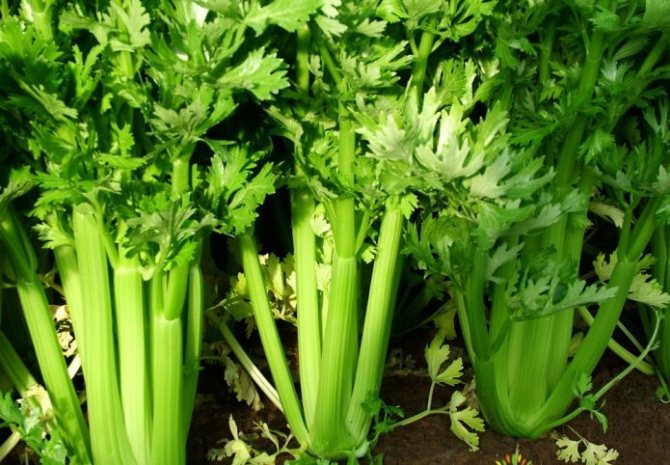

Atlant celery has a very large rosette, but only if you provide it with optimal conditions
Video: health benefits of celery
When and how to collect seeds
It is always more profitable to use seeds that are harvested from your own site. There is already confidence that the culture is fertile, processed from pests and diseases. You can collect planting material yourself using the tips:
- choose a uterine root crop. Determined by weight: 300-500 g;
- leave in the garden for wintering (in areas with a warm climate) or store until April to plant in the ground;
- celery seeds are suitable for planting only those that have ripened for at least 120 days;
- the best grains are those harvested from central umbrellas.
The testes should be two years old, but their care requirements are more stringent. Therefore, the presence of light, heat should be double. Avoid humidity, as well as waterlogging.
Description of celery
Celery belongs to the Umbrella family. Its herbs and root are used in cooking. The homeland of this product is the Mediterranean countries. In Ancient Greece, Rome, as well as Egypt, this vegetable was used as a medicinal substance and only in the Middle Ages began to eat it. It is a versatile vegetable because all its parts are used in cooking. Greens and roots are added to various salads and meat dishes. Celery is also a biennial plant with a height of 80-100 cm.
Did you know? Celery root is not only a tasty and healthy product for preparing various dishes, but also an aphrodisiac.
This vegetable is divided into three types:
- Root... Forms a large round root crop with a diameter of about 10 cm.
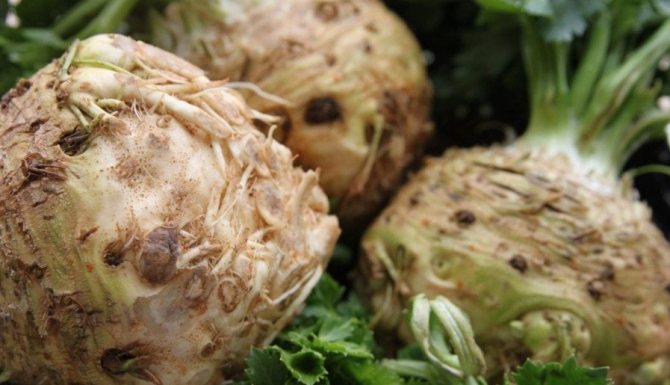

- Sheet... It has delicate small leaves with small petioles.
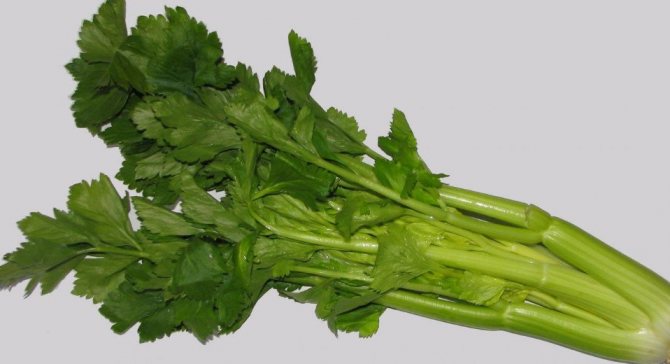

- Petiolate... It has large leaves. It has small gray seeds.
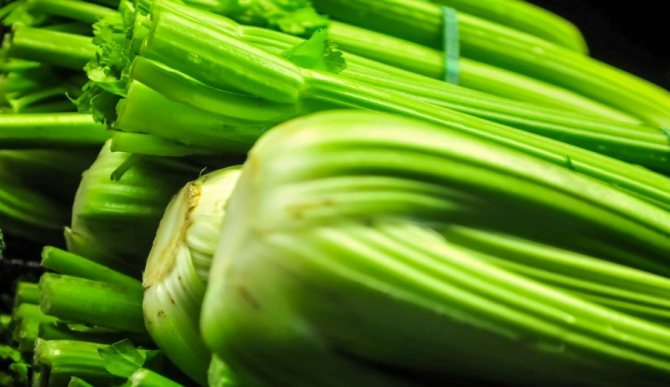

Celery is a very aromatic vegetable and tastes bittersweet.
Hardening
Even the strongest seedlings of the most productive celery will not meet the hopes of the gardener if they cannot cope with the stress of moving from home to the open sky. Therefore, a week - 10 days before disembarkation, they begin hardening walks:
- first, for half an hour or an hour, they are exposed to an open window, but not at noon, when the sun burns the leaves with direct rays.
- daily air bath time is increased by a couple of hours.
The day before leaving for the garden, celery can stand from early morning until late evening in the sun, in the wind. But after disembarkation, the beds are still protected with white covering to slightly shade the bushes.
Yulia Chernyavskaya

